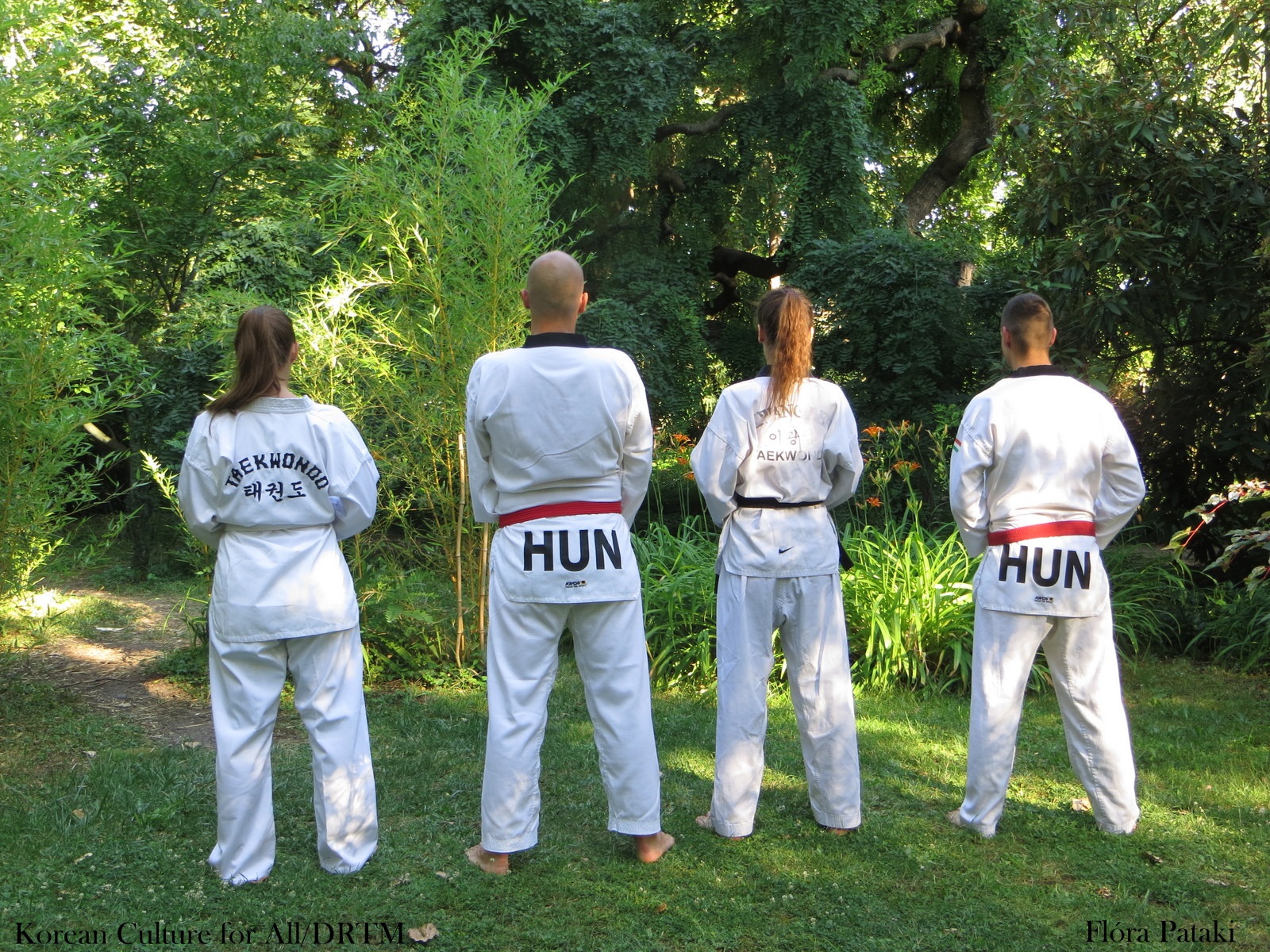- 한국어
- English
- 日本語
- 中文
- العربية
- Español
- Français
- Deutsch
- Pусский
- Tiếng Việt
- Indonesian
By Honorary Reporter Dr. Toth Monika from Hungary
Photo= Flóra Pataki, Korean Culture for All/DRTM

Due to the COVID-19 pandemic, para taekwondo athletes are training outside.
Para taekwondo will debut at the Summer Paralympics Games in Tokyo, an event postponed to next year.
The newest Paralympic sport is a type of taekwondo for disabled athletes divided into two categories: gyeorugi (sparring) and poomsae (forms). Athletes with mostly upper-limb deficiencies can compete in sparring and those who are visually, hearing or intellectually impaired in forms. Since the inaugural World Para Taekwondo Championship was held in 2009 in Baku, Azerbaijan, the sport has seen increased participation by many enthusiastic athletes with disabilities.
The most significant difference between Olympic and para taekwondo is that kicks to the head are not allowed in the latter. And unlike the Olympic format, which Korean athletes have dominated in the medal table, para taekwondo has world champions from a diversity of countries including Iran, Mongolia, Turkey, Russia, Brazil and Mexico. Para taekwondo's point system is also slightly different from that of Olympic taekwondo. Points are electronically scored based on placement and strength and awarded based on the difficulty of the maneuvers in kicking, punching and landing. Contestants wear trunk protectors and judges mark the scores in detail.
Tunde Szarka, a physical therapist as well as a third-degree black belt in taekwondo, emphasized the value of para taekwondo for the disabled. She reminisced about her experience as a taekwondo instructor for the disabled. "I used to praise and be satisfied even when a physically disabled child took a minor step forward during therapy. Also, I used to worry less about belt colors, competition results, medals or any aspect people are usually measured by. But the children showed their enthusiasm and seriousness for para taekwondo and made remarkable progress. They neither feared taking on a challenge nor gave up. Now I've learned to enjoy when they score points during a competition or win medals."
Szarka added that para taekwondo athletes find it harder and more challenging to make tangible progress than their non-disabled counterparts. "While an able-bodied athlete can make a sky-high kick, a physically disabled athlete's front kick only goes up to knee height. However, it doesn't mean he or she didn't practice hard enough but instead that the latter might've worked much harder. That's why I always tend to compare a person with his or herself and not others. Every athlete in para taekwondo should be appreciated with or without 'officially recognized' measures such as belt colors or medals," she said.
Despite the COVID-19 pandemic, para taekwondo competitors have kept up the quantity and quality of their training.
chaey0726@korea.kr
*This article is written by a Korea.net Honorary Reporter. Our group of Honorary Reporters are from all around the world, and they share with Korea.net their love and passion for all things Korean.